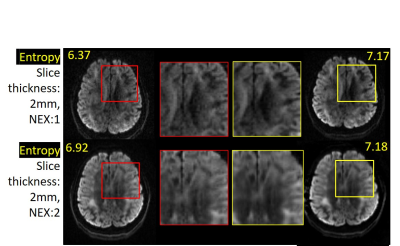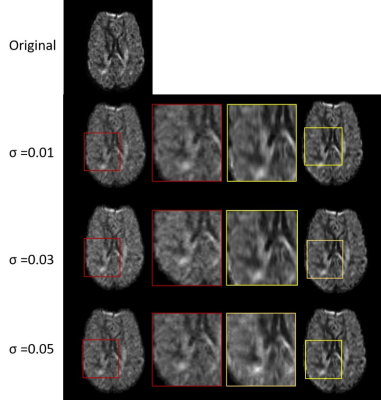Seema S Bhat1, Pavan Poojar2, Hanumantharaju M C3, and Sairam Geethanath1,2
1Medical Imaging Research center, Dayananda sagar college of engineering, Bangalore, India, 2Columbia University in the City of New York, Newyork, NY, United States, 3Department of Electronic and Communications, BMS Institute of Technology and Management, Bangalore, India
1Medical Imaging Research center, Dayananda sagar college of engineering, Bangalore, India, 2Columbia University in the City of New York, Newyork, NY, United States, 3Department of Electronic and Communications, BMS Institute of Technology and Management, Bangalore, India
Deep learning based denoising of high b-value DWI was done in this work and we achieved PSNR (>32dB) for noise simulated DWI and image entropy(>7.17) for prospective DWI. Denoising can reduce acquisition time and increase resolution with smaller slice thickness.

Figure 5: First column shows high b-value prospective DWI with slice thickness 2 mm, NEX=1, 2. More noise in test images can be observed with reduction in slice thickness. Last column shows their denoised counterparts. Noisy & denoised parts are magnified (highlighted with red and yellow squares) in second & third columns. Significant noise reduction and increase in entropy measures can be noted.

Figure 2: Visualization of Openneuro high b-value DWI denoising: First column (second row onwards) shows input images with Rician noise at σ =0.01,0.03 and 0.05 respectively. Last column shows denoised images. Noisy & denoised parts are magnified (highlighted with red and yellow squares respectively) in second & third columns. Significant reduction in noise can be observed in the denoised version.